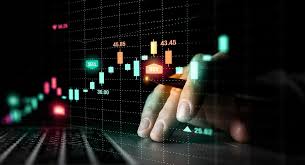
The Dynamics of Crypto Trading Volume: Trends and Insights
In the rapidly evolving world of cryptocurrency, one metric stands out as a key indicator of market health and investor sentiment: Crypto Trading Volume. Understanding this concept is pivotal for anyone involved in crypto trading, whether you're a novice or a seasoned professional. It represents the total amount of a cryptocurrency traded over a specific time period, encompassing transactions that buyers and sellers initiate. In this article, we will delve into the significance of crypto trading volume, the factors that influence it, and its role in making informed trading decisions. To explore more about cryptocurrency insights and dynamics, you can Crypto Trading Volume visit website.
Understanding Crypto Trading Volume
Crypto trading volume is a crucial metric that reflects market activity. It can be calculated for different time frames—daily, weekly, or monthly—and is usually expressed in the number of coins traded or in monetary value. High trading volume often indicates strong market activity, which can lead to higher liquidity. Liquidity is essential for traders, as it allows them to execute orders without significant price fluctuations. Conversely, low trading volume can suggest a lack of interest in a particular asset, potentially leading to price volatility.
Factors Influencing Crypto Trading Volume
Several factors can impact trading volume significantly. Understanding these factors enables traders to better predict market movements and make informed decisions. Below are some key factors:
1. Market Sentiment
Market sentiment refers to the overall attitude of investors towards a particular cryptocurrency. Positive news, such as partnerships, technological advancements, or regulatory acceptance, can drive up trading volume as more investors seek to buy in. Conversely, negative news, like hacks or regulatory setbacks, can deter investors and decrease trading volume.
2. Price Movements
Sudden price increases or decreases can lead to spikes in trading volume. When prices rise sharply, traders often rush to buy, anticipating further gains, leading to increased volume. Conversely, sharp declines may trigger panic selling, resulting in heightened activity as traders react to the market's movements.
3. New Listings and Market Expansions
The introduction of new cryptocurrencies or tokens on exchanges can significantly boost trading volume. Newly listed cryptocurrencies often attract traders eager to capitalize on the possibilities of early investments before prices stabilize. Likewise, market expansion into new regions or platforms can enhance trading volume as access to trading increases.
4. Trader Behavior and Strategies

Measurement of Crypto Trading Volume
Trading volume can be measured through various analytics platforms, which often provide insights into the volume of transactions for different cryptocurrencies across multiple exchanges. These platforms may present additional metrics, such as average trading volume, which helps traders to gauge the typical activity level for an asset.
Implications of Crypto Trading Volume for Traders
Understanding trading volume has significant implications for trading strategies. Here are a few insights on how traders can utilize this information:
1. Confirming Trends
Traders often use volume alongside price movements to confirm trends. When prices rise with high volume, it suggests that the trend is robust and may continue. Conversely, if prices rise but volume is low, it could be a sign of a weak move that may not be sustainable.
2. Identifying Reversals
Low trading volume on price increases might indicate a potential reversal as it shows a lack of conviction among buyers. Conversely, if an asset's price is decreasing but volume is high, it might signal that selling pressure is peaking, potentially indicating a reversal soon.
3. Tailoring Trading Strategies
Traders can adjust their strategies based on trading volume. For instance, a trader may decide to keep transactions limited to periods of higher volume to ensure they can execute trades at more stable prices. Alternatively, during times of low volume, they may decide to refrain from trading altogether, reducing the potential for losses from price slippage.
Conclusion
Crypto trading volume is a vital metric that provides deep insights into the market dynamics of cryptocurrencies. By understanding the factors that influence volume and its implications for trading strategies, traders can enhance their decision-making processes. As the cryptocurrency market continues to evolve and grow, monitoring trading volume will remain a critical component for success and a barometer of market health. Such knowledge not only aids in executing better trades but also in understanding the broader sentiment towards digital currencies, paving the way for future investments.

